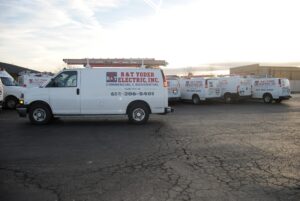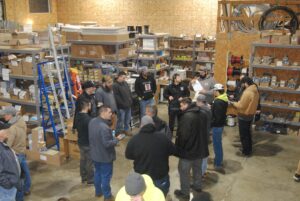
Are you in need of finding electrical wires hidden within walls but feeling overwhelmed by the task at hand? Look no further than Yoder Electric, a trusted family-owned business with a long history of expert electrical work. With a team of experienced professionals, Yoder Electric has the knowledge and expertise to assist you in tracing electrical wires within your walls with ease and precision. From residential to commercial projects, you can rely on Yoder Electric to provide exceptional service every step of the way. Trust in the team that has been exceeding customer expectations for over a decade – trust Yoder Electric. How to Find Electrical Wires in Walls.
Have you ever needed to do some electrical work in your home but had trouble finding the wires hidden inside the walls? It can be a frustrating and time-consuming task, but fear not! In this guide, we will walk you through some tips and methods to help you locate electrical wires in walls safely and efficiently. With the right tools and techniques, you’ll be able to tackle any electrical project with confidence. Let’s get started!
Understanding Electrical Wiring Layouts
Before you begin the search for electrical wires in your walls, it’s essential to understand how electrical wiring is typically installed in a building. Electrical wires run vertically and horizontally through walls, connecting outlets, switches, and other electrical fixtures. They are usually secured to studs or joists to ensure stability and safety. Knowing the general layout of wiring in your home will help you narrow down potential locations to search.
Understanding the layout of electrical wiring in your home can help you anticipate where wires may be located behind walls. This knowledge will guide you in the next steps of locating electrical wires accurately.
How Electrical Wires Are Installed
Electrical wires are typically installed inside walls during the construction phase of a building. They are routed through holes drilled in studs or joists and secured in place to avoid damage. Wires are organized into circuits that connect various electrical components, including outlets, light fixtures, and switches. Each circuit has its own circuit breaker in the main electrical panel to prevent overloading and ensure safety.
Understanding how electrical wires are installed and the purpose of different circuits in your home will give you a clearer picture of where to look for wires when needed.
Tools and Equipment for Locating Electrical Wires
Having the right tools and equipment at your disposal is crucial when it comes to finding electrical wires in walls. Several specialized tools are available that can help you locate hidden wires quickly and accurately. Here are some essential tools you may need for the job:
Stud Finder
A stud finder is a versatile tool that can help you locate both wooden studs and electrical wires in walls. By scanning the wall surface, a stud finder can detect changes in density that may indicate the presence of wires or other obstacles. Look for a stud finder with a built-in wire detection feature for added convenience.
Non-Contact Voltage Tester
A non-contact voltage tester is a handy tool for detecting live electrical wires without making physical contact. Simply hold the tester close to the wall surface, and it will alert you with a visual or audible signal if voltage is detected. This tool is ideal for checking for live wires before beginning any work.
Electrical Circuit Tracer
An electrical circuit tracer is a more advanced tool that can trace electrical wiring behind walls by sending a signal through the wires. By using a transmitter and receiver unit, you can track the path of wires in walls and identify their endpoints. Circuit tracers are especially useful for complex electrical systems with multiple circuits.
Wire Fish Tape
A wire fish tape is a flexible tool used to guide wires through walls, conduits, and other tight spaces. When you need to trace the path of electrical wires inside walls, a wire fish tape can help you route wires from one location to another. This tool is essential for fishing wires between outlets or switches.
Equipping yourself with the right tools and equipment will make the process of finding electrical wires in walls much more manageable and efficient. Make sure to have these tools on hand before you start your project.
Methods for Locating Electrical Wires in Walls
Now that you have a better understanding of electrical wiring layouts and the necessary tools, let’s explore some methods for locating electrical wires in walls. Depending on your specific needs and the complexity of the electrical system in your home, you may choose one or more of the following techniques:
Using a Stud Finder
One of the simplest and most effective methods for finding electrical wires in walls is using a stud finder with a wire detection feature. Start by running the stud finder along the wall surface in the area where you suspect electrical wires may be located. The stud finder will indicate the presence of wiring by detecting changes in density.
When the stud finder detects a possible wire, mark the location on the wall and move the tool horizontally and vertically to trace the wire’s path. Keep in mind that the stud finder may also detect metal studs, plumbing pipes, or other obstacles in the wall, so use additional tools to confirm the presence of wiring.
Using a Non-Contact Voltage Tester
If you suspect that there are live electrical wires hidden behind the walls, a non-contact voltage tester can help you identify their presence. Before starting any work, use the voltage tester to scan the wall surface and check for voltage signals. If the tester alerts you to the presence of live wires, exercise caution and avoid working in that area until the power is turned off.
A non-contact voltage tester is a valuable tool for ensuring your safety and preventing electrical accidents while searching for wires in walls. Always prioritize safety when working with electricity.
Using an Electrical Circuit Tracer
For more complex wiring systems or situations where you need to trace the precise path of electrical wires, an electrical circuit tracer can be an invaluable tool. This device consists of a transmitter and receiver unit that work together to locate and track wires behind walls. By connecting the transmitter to a live outlet or switch, you can send a signal through the wiring that the receiver can pick up.
Follow the manufacturer’s instructions for using the electrical circuit tracer, and move the receiver along the wall surface to follow the path of the wires. The tracer will emit an audible or visual signal when it detects the wire, helping you identify its location accurately.
Using a Wire Fish Tape
If you need to fish wires through walls or conduits to trace their path, a wire fish tape can simplify the process. Start by attaching the end of the fish tape to the wire you want to trace, then carefully feed the tape through the wall cavity or conduit. Use a stud finder or other tools to guide the fish tape along the path of the wire and retrieve it at the other end.
A wire fish tape is particularly useful when you need to route new wires or cables through walls for additional outlets, switches, or lighting fixtures. This tool can save time and effort by making wire installation more efficient.
Safety Precautions When Working with Electrical Wires
Working with electrical wires can be hazardous if proper safety precautions are not followed. To ensure your safety and the safety of others around you, always observe the following guidelines when locating electrical wires in walls:
- Turn off the power: Before starting any work, turn off the electrical power to the area where you will be working. Use a circuit breaker or fuse box to cut off electricity to the circuit you are working on and test the wires with a voltage tester to confirm they are not live.
- Use insulated tools: When handling electrical wires, always use insulated tools to prevent electric shock. Make sure your tools are in good condition and free of damage.
- Wear protective gear: Protect yourself by wearing safety goggles, gloves, and appropriate clothing when working with electrical wiring. Avoid wearing loose clothing or jewelry that could come into contact with live wires.
- Follow local codes: Familiarize yourself with local electrical codes and regulations before performing any electrical work. Adhering to safety standards and guidelines will help prevent accidents and ensure compliance with legal requirements.
By following these safety precautions and best practices, you can minimize the risks associated with working on electrical wiring and create a safer environment for yourself and others.
Locating electrical wires in walls may seem like a daunting task, but with the right tools and techniques, you can easily find and trace wires for your electrical projects. Whether you’re installing new outlets, switches, or light fixtures, knowing how to locate wires safely and efficiently is essential for a successful installation.
By understanding the layout of electrical wiring in your home, equipping yourself with the right tools, and following safety precautions, you can tackle any electrical project with confidence. Remember to prioritize safety at all times and seek professional help if you encounter any challenges or complications during the process.
With the knowledge and skills gained from this guide, you’ll be well-equipped to find electrical wires in walls and complete your electrical projects with ease. Happy wiring!







